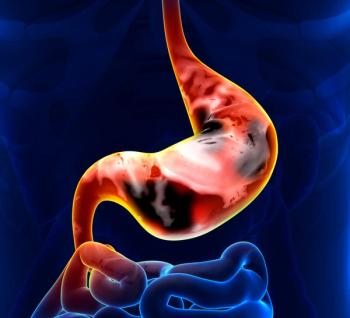
Oncology NEWS International
- Oncology NEWS International Vol 11 No 7
- Volume 11
- Issue 7
First-Line Capecitabine/Irinotecan Promising in Metastatic Colorectal Cancer
OXFORD, UK-The combination of capecitabine (Xeloda) and irinotecan (Camptosar) appears to be an effective, easy-to-use, and well-tolerated treatment for patients with metastatic colorectal cancer, according to results of a phase I/II trial conducted by British and Dutch researchers.
OXFORD, UKThe combination of capecitabine (Xeloda) and irinotecan (Camptosar) appears to be an effective, easy-to-use, and well-tolerated treatment for patients with metastatic colorectal cancer, according to results of a phase I/II trial conducted by British and Dutch researchers.
David J. Kerr, Rhodes Professor of Therapeutics and Clinical Pharmacology and director of the National Translational Cancer Research Network, Oxford University, presented the results at a poster session of the annual meeting of the American Society of Clinical Oncology (abstract 643).
The study examined the safety and efficacy of five dosage levels of the drugs among 36 patients with histologically proven, measurable metastatic disease of the colon or rectum. The patients ranged in age from 37 to 76 (median, 61), had a WHO performance status of 2 or less, and had organ involvement at 1 or 2 sites, primarily liver and/or lungs. Nine patients had received adjuvant chemotherapy (which may have included fluorouracil/leucovorin), and seven had received radiotherapy. None had received chemotherapy for their metastatic disease.
Dosage Regimen
The capecitabine/irinotecan regimen was given in a 21-day cycle consisting of irinotecan by 30-minute IV infusion on day 1 and capecitabine orally twice a day on days 1 to 14, with a 1-week rest before the next cycle. Dose levels were as follows (all capecitabine doses are twice daily): Level 1: irinotecan 200 mg/m², capecitabine 750 mg/m²; level 2: irinotecan 250 mg/m², capecitabine 750 mg/m²; level 3: irinotecan 250 mg/m², capecitabine 1,000 mg/m²; level 4: irinotecan 300 mg/m², capecitabine 1,000 mg/m²; and level 5: irinotecan 300 mg/m², capecitabine 1,250 mg/m².
"We asked the patients to start taking capecitabine at home," Dr. Kerr said, "and then 2, 3, or 4 hours later, they would receive the infusion of irinotecan."
The researchers defined dose-limiting toxicity as grade 4 neutropenia for 7 days or longer; grade 4 thrombocytopenia; grade 3-4 infection; grade 3-4 stomatitis; grade 3-4 diarrhea or grade 2 diarrhea for more than 8 days; grade 4 vomiting; grade 3-4 skin erythema; grade 3-4 hand-foot syndrome for 2 or more days; other toxicities (except alopecia), grade 3-4; and all toxicities preventing oral intake of at least 10 capecitabine doses.
"The dose level we selected for moving forward to phase III trials was level 3," Dr. Kerr noted. "We selected irinotecan at 250 mg/m² by IV infusion and capecitabine at 1,000 mg/m² twice daily on days 1 to 14."
Toxicity
Major toxicities were dose-limiting diarrhea and neutropenia, Dr. Kerr said. "When we looked at the collected grade 3-4 toxicities across the length and duration of the study, we found that the rate of hand-foot syndrome at the selected dose of capecitabine is not problematic," he said. Dr. Kerr pointed out that three of the five patients with troublesome diarrhea on the optimal dose were Dutch patients who did not take loperamide (Imodium).
The capecitabine/irinotecan combination produced "very decent" responses at every dose level, Dr. Kerr said. For all dose levels combined, the response rate was 52%. At the selected dose level (level 3), 42% of the patients responded. As a result, Dr. Kerr said, phase III trials are planned in both the metastatic setting and the adjuvant setting.
Articles in this issue
over 23 years ago
Good Activity for Capecitabine Confirmed in European Studyover 23 years ago
Capecitabine/Vinorelbine Effective in Heavily Pretreated PatientsNewsletter
Stay up to date on recent advances in the multidisciplinary approach to cancer.
















































































